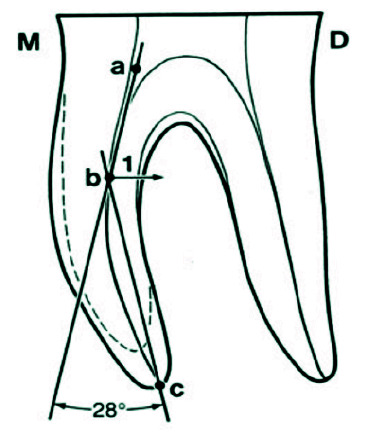Comparison of Dentinal Defects Formation in Straight, Moderate and Severely Curved Canals by Three Distinctive Nickel Titanium Instruments: An in vitro Study.
引用次数: 0
Abstract
Statement of the Problem: It is stated that engine-driven instruments might cause dentinal defects during root canal preparation. These defects might spread and progress into greater fractures or vertical root fracture. Purpose: This study aimed to compare the incidence of dentinal defects that might arise all through preparation of root canals, using One Shape, RaCe, and WaveOne systems in canals with a curvature (0-20°) and (20-40°). Materials and Method: In this in vitro study, 150 mandibular first molars were enrolled. Based on the degree of curvature in the mesial roots, the samples were divided into two groups (n=75) of straight and moderately curved canals (0-20º), and severely curved canals (20-40°). Then each group was randomly divided into four sub-groups. In subgroups 1 to 3 from each group, canals were prepared using WaveOne, One Shape, and RaCe. Then all roots were sectioned at 3, 6 and 9-mm distances from the apex. The slices were evaluated using stereomicroscope at 12× magnification. The data were analyzed using the Chi-square and Fisher’s exact tests and the level of significance was set at 0.05. Results: Fracture and other defects were not found in the control groups. In canals with curvature (0-20°), WaveOne caused the maximum dentinal defects and RaCe produced the least. Moreover, in canals with curvature (20-40°), One Shape caused the maximum dentinal defects while WaveOne and RaCe caused equal dentinal defects approximately. Conclusion: There was a statistically significant relationship between the performance of RaCe and One Shape in canals with curvature (0-20º) and (20-40º), (pValue< 0.05) while no statistically significant difference was observed in connection to the performance of WaveOne (p> 0.05).

三种不同镍钛器械在直、中、重度弯曲管中形成牙周缺损的比较:体外研究。
问题说明:据称,在根管预备过程中,发动机驱动的器械可能会导致牙本质缺陷。这些缺陷可能会扩散并发展为较大的骨折或垂直根部骨折。目的:本研究旨在比较在弯曲(0-20°)和(20-40°)的根管中使用One Shape、RaCe和WaveOne系统制备根管时可能出现的牙本质缺陷的发生率。材料和方法:在这项体外研究中,150颗下颌第一磨牙被纳入研究。根据近中根的弯曲程度,将样本分为两组(n=75),即直管和中等弯曲管(0-20º),以及严重弯曲管(20-40°)。然后将每组随机分为四个子组。在每组的第1至3亚组中,使用WaveOne、One Shape和RaCe制备管。然后在距顶端3、6和9mm的距离处对所有根进行切片。使用12倍放大率的立体显微镜对切片进行评估。使用卡方和Fisher精确检验对数据进行分析,显著性水平设定为0.05。结果:对照组未发现骨折和其他缺陷。在弯曲(0-20°)的根管中,WaveOne引起的牙本质缺陷最大,而RaCe引起的最小。此外,在弯曲(20-40°)的根管中,One Shape引起的牙本质缺陷最大,而WaveOne和RaCe引起的牙质缺陷大致相等。结论:在弯曲(0-20º)和(20-40º)的管中,RaCe和One Shape的性能之间存在统计学显著关系(p值<0.05),而WaveOne的性能没有统计学显著差异(p>0.05)。
本文章由计算机程序翻译,如有差异,请以英文原文为准。
求助全文
约1分钟内获得全文
求助全文

 求助内容:
求助内容: 应助结果提醒方式:
应助结果提醒方式:


